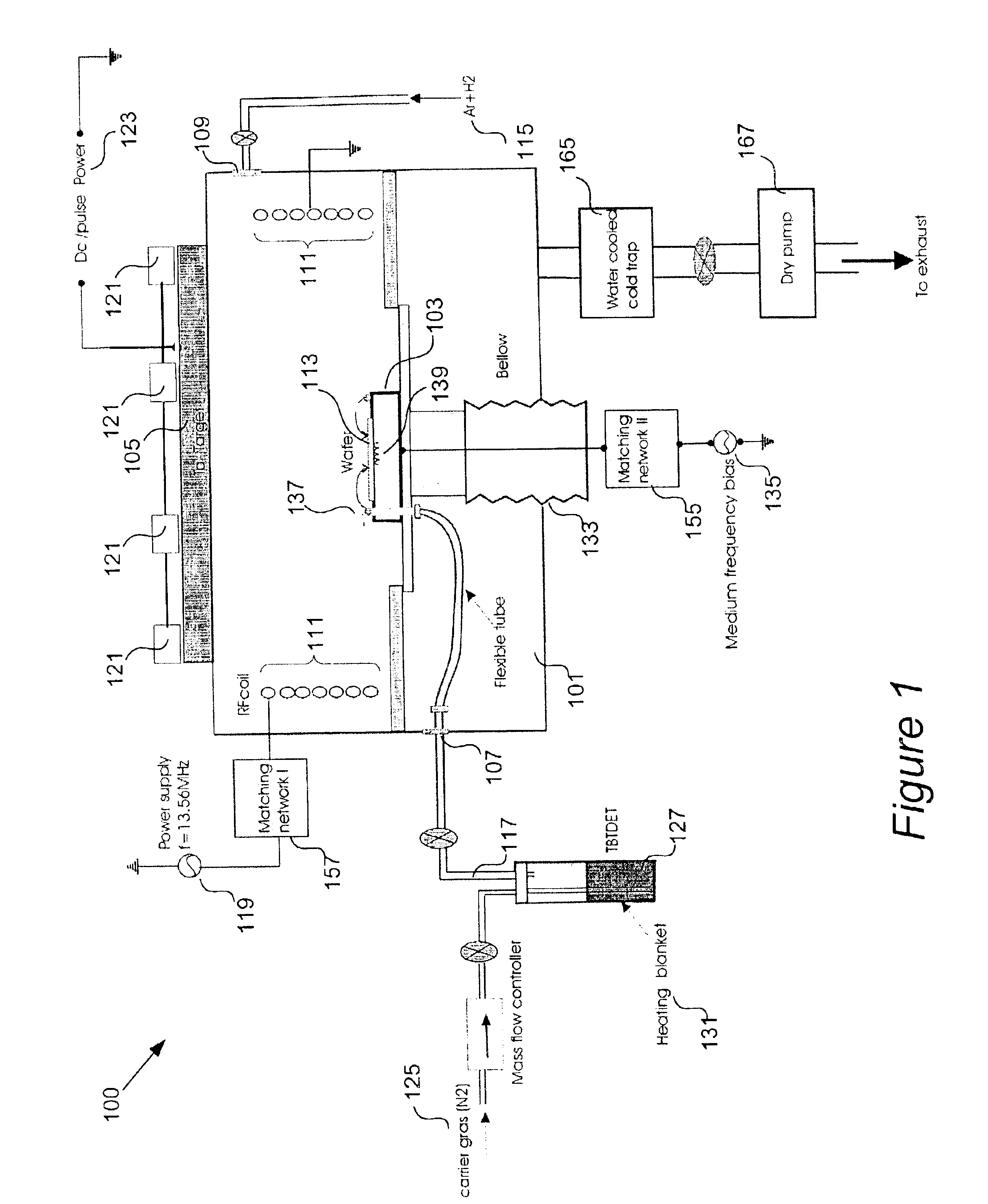Chemically-enhanced physical vapor deposition
a technology of physical vapor and enhanced vapor, which is applied in the direction of vacuum evaporation coating, plasma technique, coating, etc., can solve the problems of insufficient conformal pvd liners for processes employing very narrow trenches having high aspect ratios, and affecting the quality of the layer
- Summary
- Abstract
- Description
- Claims
- Application Information
AI Technical Summary
Benefits of technology
Problems solved by technology
Method used
Image
Examples
example
Films have been deposited using an apparatus having features similar to those depicted in FIG. 1 and described above. The target was tantalum and a reactive nitrogen carrier gas was employed to deliver TBTDET directly to a silicon dioxide wafer. An RF powered secondary ionization plasma was employed at a power of 300 watts. The magnetron power applied to the target was 2.18 kilowatts. The substrate was held at a temperature of 310 degrees C. and no bias was applied to it. The overall chamber pressure was approximately 150 mTorr. Molecular hydrogen was delivered via the sputtering inlet at a flow rate of about 2 sccm. Molecular nitrogen carrier gas was bubbled through the TBTDET and entered the chamber through a second inlet next to the wafer at a flow rate of about 8 sccm. The bubbler temperature was maintained at a temperature of 120 degrees C.
In the experiment, a planar film was deposited to a thickness of 1150 nanometers on the silicon dioxide wafer. The deposition rate was 38.3 ...
PUM
| Property | Measurement | Unit |
|---|---|---|
| Fraction | aaaaa | aaaaa |
| Fraction | aaaaa | aaaaa |
| Power | aaaaa | aaaaa |
Abstract
Description
Claims
Application Information
 Login to View More
Login to View More - R&D
- Intellectual Property
- Life Sciences
- Materials
- Tech Scout
- Unparalleled Data Quality
- Higher Quality Content
- 60% Fewer Hallucinations
Browse by: Latest US Patents, China's latest patents, Technical Efficacy Thesaurus, Application Domain, Technology Topic, Popular Technical Reports.
© 2025 PatSnap. All rights reserved.Legal|Privacy policy|Modern Slavery Act Transparency Statement|Sitemap|About US| Contact US: help@patsnap.com

